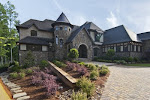Green Building means something different to everyone you ask about the subject. I have listened to a lot of people that perceive themselves as the foremost experts in the field. I have spent countless hours in Green Building classes and Green Builder Council meetings. I have read a number of books on Green Building and related subjects. I have received my Certified Green Professional certificate. There is now a television station devoted to Green Building on my satellite provider called Planet Green TV. There are infinite websites on the subject, countless discussion groups on professional networking websites, various companies selling green this and green that. The green buzz has become overwhelming. People are acting as if this is something new. Green Building practices have been utilized since the energy crisis in the 1970’s. Don’t believe me. Have you ever seen an old big bulky solar panel on a small bungalow house? Have you ever heard of a geo-thermal heat pump or double paned low-e windows? We have been using engineered floor systems (wood I-Joists) for over 10 years now in my southeast market. This gets back to Einstein’s theory of relativity. Green building has always been around us. Building science is not new; we just never realized it was there. It was never brought to the forefront until the world was hit with a struggling economy and outrageous fuel prices. Everything is relative. If you were building quality, tight, energy efficient homes you just called it a quality home. Granted this Green Building push has increased the quality of homes built by companies that prior only abided by the local building codes. For the most part quality builders have to change what they are doing very little to get a gold certified green home, besides the additional paperwork, third party inspections and the fees associated with both. To me the most important thing to consider when building a green home is framing the home as tight as possible. This will allow the HVAC contractor to better efficiently control the indoor air quality. After all in the whole scheme of things it is the next fifty years of energy usage after your home is built that matter the most. Energy consumption is the most expensive and can be the sole greenest item in the house. I’ll take a solar hot water tank over bamboo floors any day of the week. Not to discredit green building materials because there are a plethora of new things on the market today. Technology for building materials only keeps getting better, faster, and more ecological, but being green starts with personal strides to reduce energy consumption.
Think about easy things you can do to save energy. Things that may seem small and trivial will have a snowball effect and accumulate over time. Simple things like unplugging televisions and alarm clocks in rooms that get seldom use or unplugging phone chargers when not in use can lower electrical usage. Changing out all of your light bulbs to compact fluorescent lights will save energy. Turning off lights or installing dimmer switches are good ways to save energy. Walking or riding a bike to the park instead of driving and recycling bottles, cans and paper save energy. Creating compost for organic waste and reducing the amount of garbage you create all save energy in some way. Before you start thinking about green building you need to alter your lifestyle ever so slightly and start thinking about how you can consume less energy and create less waste.
Create a snowball effect. Think about ways to consume less to enhance your green technology. For example, save 10% less water by consciously taking a shorter shower now. When you build your house install a low flow shower head that will reduce 20% of your water usage on top of 10% you are accustomed to saving by taking shorter showers. Being green is a lifestyle change. It’s not just purchasing green technology or building an energy efficient home. The house is a system. The people living in the house are part of the system, consuming energy, using the HVAC, turning on lights, opening doors and windows. Does it make sense to build an air tight house and keep all of the windows and doors open while the air conditioner is running? No. Truly being green means using the new technology, building science and energy systems to the best and most efficient ability possible.
Friday, January 22, 2010
Subscribe to:
Posts (Atom)
